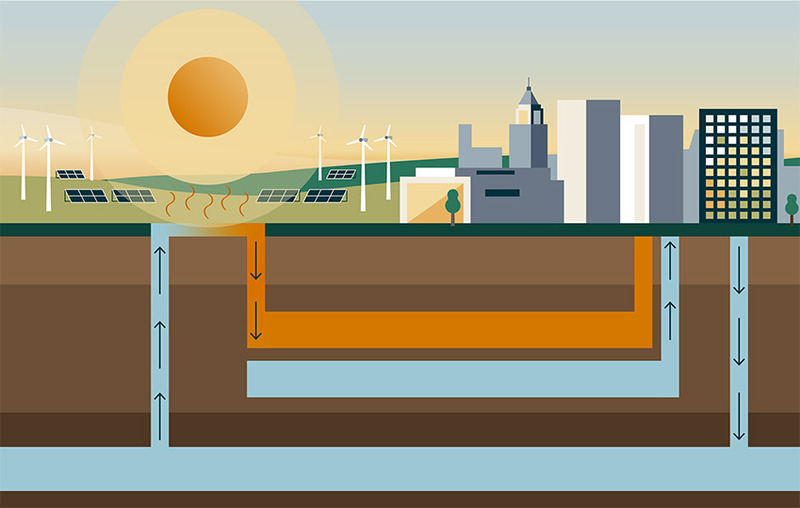The energy required to heat and cool buildings is staggering—nearly 25% of the world’s energy is used for this purpose. As global temperatures rise and energy demands grow, finding affordable and sustainable ways to manage cooling and heating is more important than ever.
The Global Need for Cooling and Heating

While many of us take heating and cooling for granted, millions of people around the world still lack access to these basic comforts. In developing countries, low-income families often struggle to afford adequate heating during cold winters or cooling during scorching summers.
This can lead to serious health risks, especially during extreme weather events like heatwaves or cold spells. At the same time, as incomes rise and climates change, the demand for air conditioning is skyrocketing.
By 2050, the number of air conditioning units worldwide is expected to triple, from 1.6 billion to 4.8 billion. This raises a critical question: How can we meet the growing need for cooling and heating while reducing our carbon footprint?
The Climate Impact of Cooling and Heating
Heating and cooling systems have a significant impact on the environment. In higher-income countries, most homes and buildings rely on heating systems like boilers, furnaces, or electric heat pumps. Many of these systems burn fossil fuels such as natural gas, oil, or propane, releasing carbon dioxide and other greenhouse gases into the atmosphere.
Even electric heating systems, which are often powered by fossil fuel-generated electricity, contribute to climate change. In developing countries, many people rely on wood-burning stoves for heat, which not only emit greenhouse gases but also create harmful indoor and outdoor air pollution.
Cooling systems, particularly air conditioners, also have a major environmental impact. Air conditioners work by absorbing heat from indoor air and releasing it outside, using chemicals called refrigerants.
Unfortunately, many refrigerants are hydrofluorocarbons (HFCs), which are potent greenhouse gases that can be hundreds of times more harmful than carbon dioxide. Additionally, air conditioners consume large amounts of electricity, much of which is generated from fossil fuels. As the demand for cooling grows, so does the strain on our energy systems and the planet.
Sustainable Solutions for Cooling and Heating
The good news is that there are many ways to reduce the environmental impact of cooling and heating while keeping our indoor spaces comfortable. One of the most effective strategies is to design buildings that use less energy in the first place. For centuries, people have used clever design techniques to stay cool or warm.
For example, Native Americans built homes from clay and straw, which kept interiors cool in the summer. Today, modern “passive houses” take this concept to the next level by using airtight windows, thick insulation, and heat-absorbing materials like concrete to reduce the need for heating and cooling by up to 80%.
In warmer climates, simple measures like painting roofs white or using reflective materials can significantly reduce indoor temperatures, lowering the need for air conditioning. Existing buildings can also be retrofitted with energy-efficient windows, doors, and insulation to improve their performance.
Another key solution is switching to low-carbon heating and cooling technologies. Heat pumps, for example, are a highly efficient alternative to traditional heating systems. They work by extracting heat from the surrounding air or ground and transferring it indoors.
In the summer, they can reverse the process to act as air conditioners, pulling heat out of the building and releasing it outside. Ground-source heat pumps, which draw heat from the earth, are particularly efficient because soil temperatures remain stable year-round.
When powered by renewable energy, heat pumps can reduce emissions by up to 75% compared to natural gas furnaces.
Reducing the Impact of Air Conditioning

Air conditioning is essential for comfort and health in many parts of the world, but its environmental impact can be minimized. More than 120 countries have committed to phasing out the use of HFCs as refrigerants, a move that could prevent nearly 1 degree Fahrenheit of global warming.
Additionally, improving the energy efficiency of air conditioners can reduce electricity consumption and lower emissions. Governments and manufacturers can play a role by setting stricter efficiency standards and investing in cleaner cooling technologies.
A Greener Future for Cooling and Heating
As the demand for cooling and heating continues to grow, it’s clear that we need to rethink how we manage indoor temperatures. By combining smarter building design with low-carbon technologies, we can create comfortable spaces while protecting the planet.
Whether it’s through passive house designs, energy-efficient heat pumps, or cleaner air conditioners, the solutions are within reach. The challenge is to make these options affordable and accessible to everyone, ensuring that no one has to choose between comfort and sustainability.
In the end, cooling and heating are about more than just comfort—they’re about health, safety, and quality of life. By embracing innovative solutions and working together, we can build a future where everyone can stay warm in the winter, cool in the summer, and secure in the knowledge that we’re doing our part to protect the Earth.
